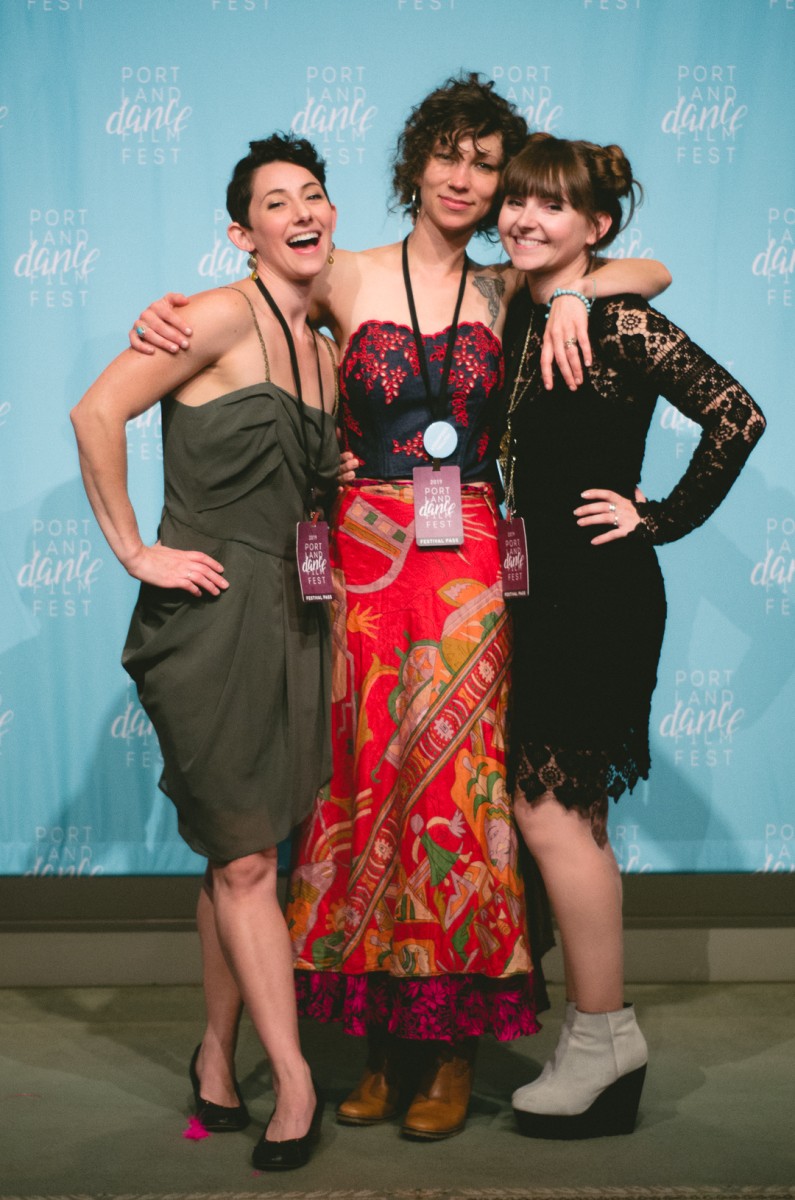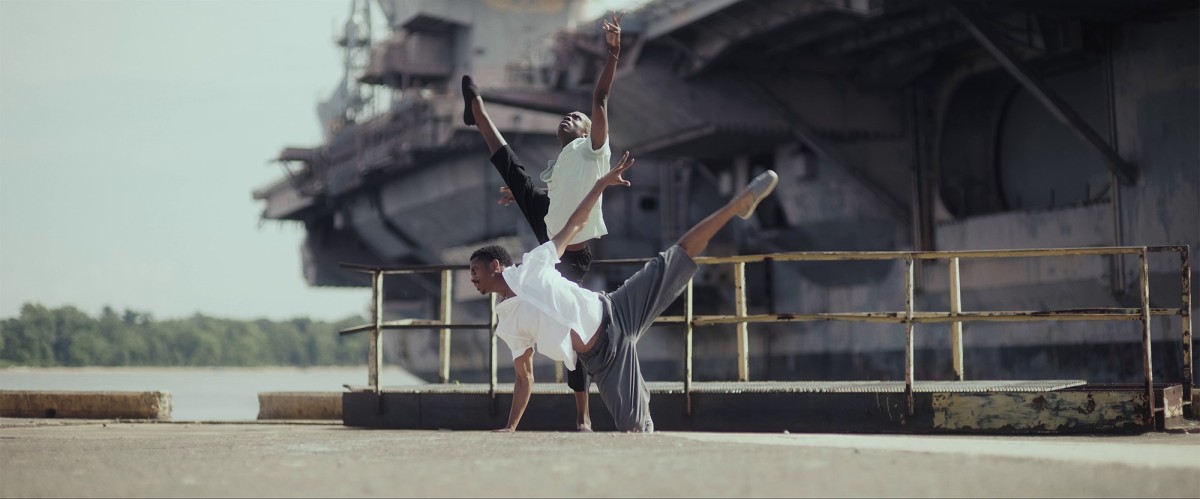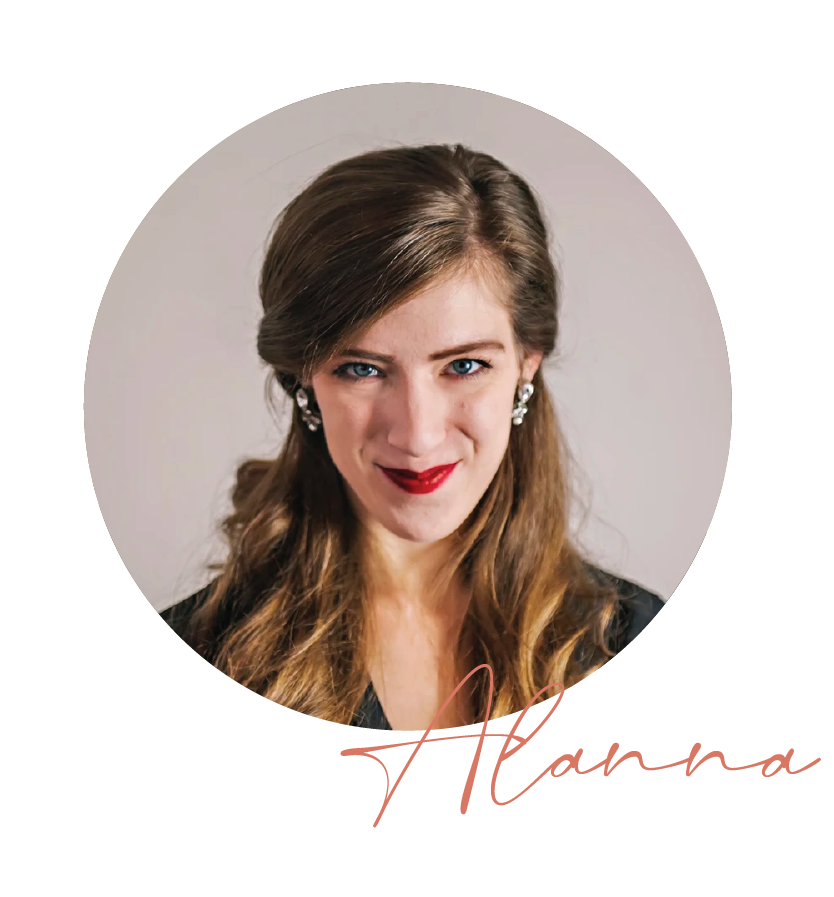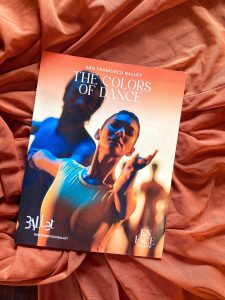
Creating New Dimensions: An Interview with the Portland Dance Film Festival
The Portland Dance Film Festival was launched in 2017 by Kailee McMurran, Jess Evans, and Tia Palomino. Every year since then they have curated dance for film that is crafted with originality, innovative cinematography, and unique choreography. With the 2022 festival just around the corner (October 7th-9th), we sat down with this powerhouse team to learn more about the impetus behind the project, explore how dance’s relationship to the film medium has shifted in recent years, and get a sneak preview at what to expect at this year’s Festival.

PDFF: With our own explorations into dance film we were learning so much about what made a film more and less successful. We took on a big project of turning an evening-length live dance show into a film and came out the other side much wiser and with a 30-minute dance film that Kailee began submitting to the film festival circuit. The process of submitting our film, interacting with the festival organizers, and ultimately seeing the festival trailers, enlightened us to the large body of dance film work that, short of going to the festivals, we had no way of seeing. There was a particular feeling of hunger and ripeness that we felt and we caught the zeitgeist with an excitement that we could further open the portal of dance film for and in Portland.
The pandemic forced many dancers to explore the medium of film in ways they hadn’t before – what lasting effects of this do you see in the films that are now being submitted to PDFF?
PDFF: For our 2020 and 2021 seasons we had a substantial increase in submissions, and for 2020 it was clear that many of them were made by artists who were in quarantine, using the resources they had at hand.
Kailee had the brilliant idea to make a category called Stay Home Screendance and we showed these films as a collection. We have since seen more films adapted from dance pieces that were meant for the stage, but were redirected to film when shows were canceled. This season we are still seeing themes from the time of isolation that we are moving out of, we have a lot of solos and smaller production projects in our line-up, and we are seeing more artists explore the medium of dance film than ever before!
Choreographing for, and performing to, a theater is a very different creative process than capturing the work through a camera lens. How have creators responded to this shift and how does it change the final works they submit?
PDFF: As with any art form, there is a learning curve as the tools are engaged with and an edge of discovery as the nuances of what makes it true are experienced. At PDFF we have a privileged seat of watching the growth of not just the form as it collectively is learned and crafted but we also get to watch the process and progress of individual artists as they submit their new works year to year. When we witness a live dance piece, we are in the same dimensional space with the performers and we are connected to their nervous systems. If we watch a filmed dance piece that is generally from the same vantage point as watching it live (as with documentation of a piece) this dimension and connection is largely lost. We need the tools of film to create the dimension, to create the world for us, and connect us to the performer. Some questions we like to ask are: Is the choreography made with the camera in mind? Does the camera have choreography? And ultimately, does the camera contribute to the success of the dance OR would this be more successful as a live performance?
PDFF: Using the platform FilmFreeway, we typically accept submissions from January to May, allowing for a gradual process of watching and rating films. Each season we gather 7 other judges from the area who have expertise in dance, film, music, design, and art in general so that ideally there are 10 judges (including the three PDFF organizers) who are bringing our bodies of knowledge to the judging process. As films get rated by judges, they start to sift and organize into the Top 50 films. After submissions have closed, we take a few weeks to get reacquainted with films we watched months ago and we give the opportunity for the judges to bring in films that didn’t make the Top 50 that they feel should be considered. Over two deliberations meetings, we go through the films to discuss and vote on whether they make it into the festival. After that, the judge’s job is done and the three of us set to curating the festival from the films we have chosen.
This year’s PDFF is debuting the longest film ever shared thus far in its history – tell us about the piece and how you feel about incorporating longer works into the lineup.
PDFF: Elegy of Lost Things comes to us from Italy, and at 47 minutes long, it is indeed the longest film we have chosen to show in PDFF. Once you see the film, you will understand why we are excited to share it! It is a filmic tale, told through movement and cinematography. We have always been open to and excited about longer works. There is a particular rigor in the art of the long dance film. Without words telling the story, the audience needs a depth and coherence of the choreography, the characters, the sound, the setting, and the cinematography to stay engaged. It is quite a feat to produce such a work and we believe Elegy of Lost Things is a beautiful portrayal of what a long dance film can be.
While PDFF is focused on supporting local artists, you now also support the work of artists all across the world, with 12 countries represented in this year’s film selection. How do you balance your passion for local community and your passion for global diversity?
PDFF: PDFF is an offering to our local community by way of showcasing local, national, and international works. The learning of the art form doesn’t stop, and sharing that learning with our local audience is a part of our mission. After watching thousands of dance films, we think that one of the most useful ways to learn about the art of dance film is to watch them! We hope that PDFF is an enjoyable and moving experience as well as an educational one for local artists who want to make dance film or who currently are dance film makers. Over the years we have included workshops and experts panels as a part of the festival experience and Oregon artists who submit their films for consideration get a discount. It is one of our favorite things to get to show a local film during PDFF!
PDFF: Each season we welcome a new flow of films and while we do curate what films flow well into the next, the tone and subjects an evening of PDFF Picks traverses comes from what has happened and is happening in the lives of the artist and the bodies of culture that are being represented. Practically speaking, PDFF is a passion project for us, so we allow ourselves to adjust year to year as the landscapes of our lives shift. Really, we are inspired by the artists and every year as we open submissions we are excited to see how they are meeting and engaging with their lives through the form of dance film and what is new within the world of dance film, because of course, it is ever-changing and discovering itself anew.
Along with purchasing tickets to see PDFF this year, how can our readers both near and far participate in this amazing event and support what you do?
PDFF: After the last few years of adapting to be an online festival, we are taking a break from that avenue and focusing on our in-person offerings. We love when our audience engages with us via email and social media and lets us know what they appreciate and what they are curious about. We are always looking for ways to be supportive of the artists, who provide the magic that PDFF gets to shine our light on, so please follow the films and their creators on social media and let them know that you saw their work and appreciated it. We also love collaborating, so if anyone has ideas for specialty screenings, events we can help bring dance film to, and any other ways we can be in community with other event organizers, do let us know!
The Portland Dance Film Festival is October 7th-9th, 2022. Learn more and purchase your tickets here.
![]()




Follow Us
Subscribe For Updates & Giveaways!
Stay up to date with exciting original content, upcoming performances, and giveaways unique to your community and beyond!

